Truly, we live in a golden age of tabletop gaming. A reactionary movement away from purely digital experiences and activities has combined with a rise in alternative funding sources to make viable so many niche and innovative board and card games. The lowered barriers to development and production make possible games that need not succeed purely on their fun or entertainment factor, but may address complex subjects and challenging social issues for their own sakes. HEY! Imaginable Guidelines Istanbul is such a role-playing game, using a set of cards to guide players through a series of debates on a plethora of urban and community design issues. For those concerned with subjects such as interstitial space, street art, and traffic bollards then this is the game for you. But if you’re possessing of only a passing interest in these subjects or, as your reaction to interstitial space may reveal, your familiarity with design theory and terminology is lacking, HEY! Imaginable Guidelines Istanbul may be less accessible and ultimately less engaging.
Inspired by similar design and ideation card decks, designer Alexis Şanal sought “to capture all the amazing voices of city-makers… and to empower the self-organizing nature of Istanbul’s city making history and empower its citizens with the base of knowledge of city design”.
I should be clear straight away that HEY! Imaginable Guidelines Istanbul is not a game in a technical sense, owing to the fact that it does not possess a win state. There are more types of games than there may be words in (Pick Your Own Politician’s) Twitter vocabulary, but a fundamental feature of a game is a defined winning condition that ends the game. Without such a state, HEY! Imaginable Guidelines Istanbul is best considered a role-playing activity, one designed for groups of designers and for design workshops. It’s this reviewer’s opinion that its value as an activity will diminish considerably if played under casual conditions, particularly owing to the likely need for a dedicated moderator, or if involving less design-sophisticated players.
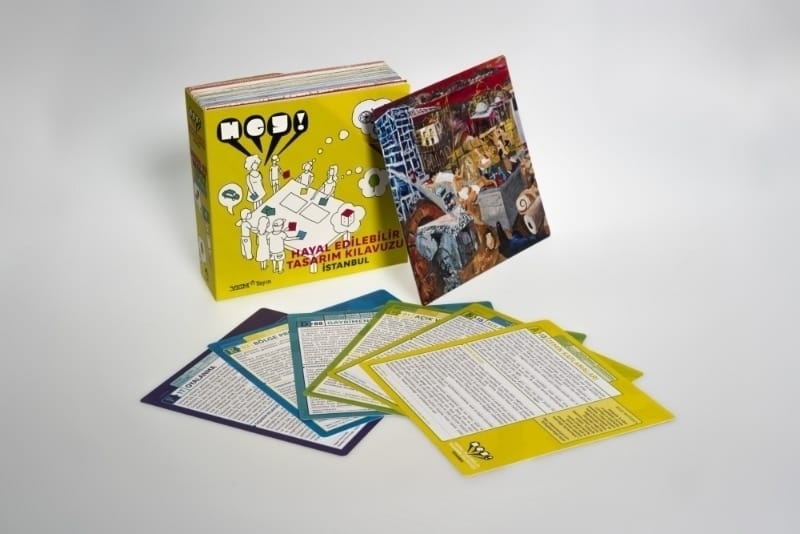
I should state now that the name HEY! Imaginable Guidelines Istanbul is an incredible one. By incredible, I mean I can’t believe it. As Alexis explains, the name comes from combining a call to action (Hey!) with the design tool (Imaginable Guidelines) at the heart of it all. In part due to my fascination with it, I will use the full name throughout this review.
The success of a role-playing activity necessarily depends on how much the players buy into their roles and the shared context. In HEY! Imaginable Guidelines Istanbul, the purpose of the game is to get people talking about issues in their neighborhoods by roleplaying as a municipal government, an NGO, neighborhood resident, or expert. Players are free to choose how they conceive and embody roles within those categories, so there is ample room to be creative in how to approach the debates that comprise the experience of HEY! Imaginable Guidelines Istanbul. That said, the role of the moderator, while not necessarily required, is likely to be paramount to ensuring a coherent playing experience, as tends to be the case in other examples of role-playing activities.
To review HEY! Imaginable Guidelines Istanbul, I enlisted colleagues from the Bahçeşehir University Game Design Lab (BUG). The play test team consisted of myself, an American holder of a game design degree, a couple of Turkish second-year students from BAU’s game design program, and the university’s outgoing French game design instructor. Three of the participants lived in Beşiktaş, which was helpful as the game expects participants to share a common knowledge of community problems.
HEY! Imaginable Guidelines Istanbul is a game of cards, and its cards are very distinctive. Each one pairs what typically appears to be a third of an entire Wikipedia article worth of information with an artistic graphic sourced from a very diverse cast of contributing artists. Almost everyone was a big fan of the card art, but the art proved to be nonessential to the game experience.
Player decisions and discussions are designed to be fueled by the written information on the other side of the card. The game proceeds by distributing cards among all players, who then sort their cards into three piles: cards necessary to address their community problem, cards that are desirable but unnecessary for addressing the problem, and those cards whose subject is irrelevant to the problem. Once the cards have all been sorted, players pass the irrelevant cards to the next player who has a chance to consider whether the cards’ subjects are necessary or desirable to them. This proceeds until everyone has reached a consensus on which cards are irrelevant to the issue or problem that everyone has agreed to address. With 102 cards in a deck, this can take a while and some players may end up waiting several minutes for others to finish sorting their cards.
In our playtest, we chose to address the issue of garbage management in our communities. The initial sorting phase was widely considered to be the most enjoyable. However, the subsequent passing of the irrelevant cards around for debate proved tedious and frustrating for most of the players. Collectively, we committed to reviewing and arriving at a consensus about the cards deemed to be irrelevant, but reaching that point alone took about twenty minutes and afterward two members were unwilling to continue. If played to completion, with a consensus reached for every card, it is easy to envision HEY! Imaginable Guidelines Istanbul lasting an hour and a half and maybe much longer.
The cards tended to be interesting and their subjects novel to us (laypersons all) in the playtest. The subjects were presented in a mix of practical and theoretical description, and quite often the description was the definition of dense; full of nomenclature and abstraction. The most fun we had as a group was just reading the cards out loud as if they were simple and intended to be understood by seven-year-olds. While the package doesn’t say so, the website for HEY! Imaginable Guidelines Istanbul states that the activity is appropriate for children as young as seven. That. is. ludicrous. Very strange indeed would be the gaggle of adolescents clamoring to role play in this activity. As a guided classroom activity under a teacher-moderator, this could work, but even then it’s really hard to ever imagine it being considered “play”. As something to do for fun at home or with friends, it seems very unlikely that HEY! Imaginable Guidelines Istanbul would prove recreational or entertaining for adults let alone for children.
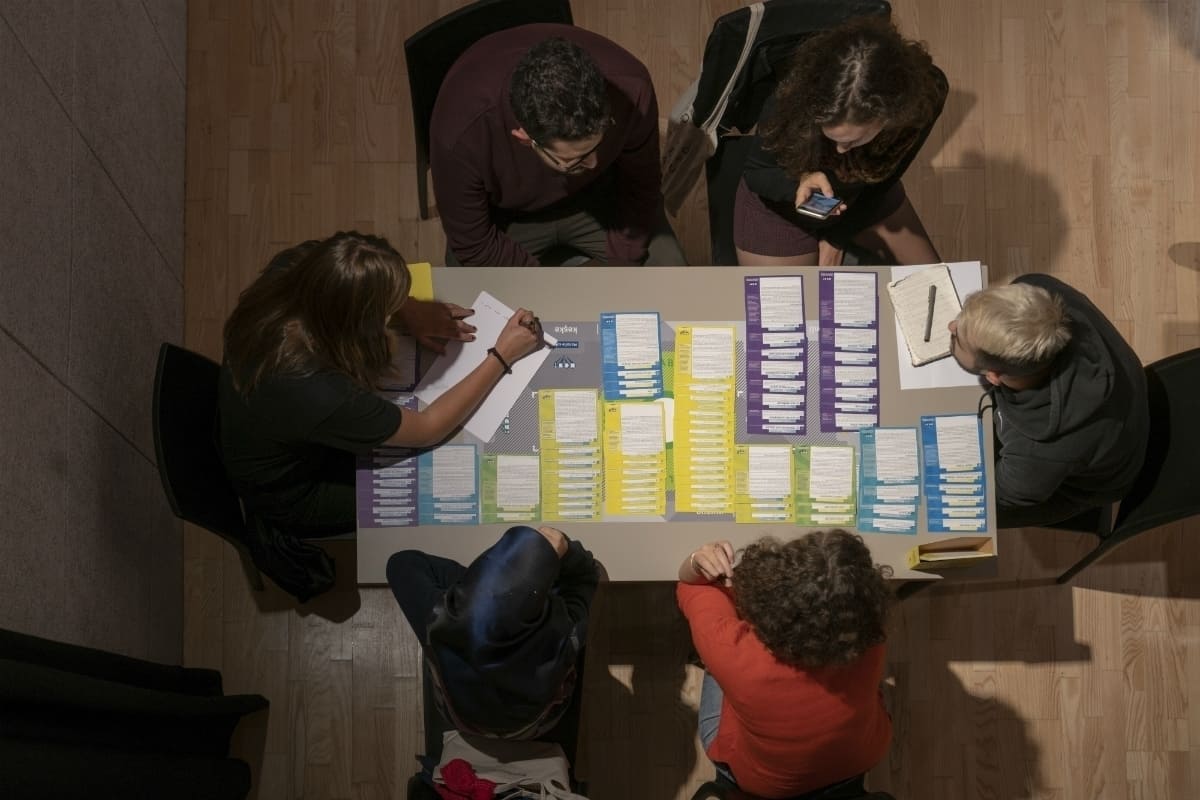
There might be a gap between website marketing for HEY! Imaginable Guidelines Istanbul and the designer’s intended utilization. As per Alexis, she created it with three distinct audiences in mind: citizens, relevant NGOs, and practitioners. While she definitely was clear that she meant citizens very broadly, the presentation of the activity seems far more appropriate when focusing on the last two.
Ours was a mixed playtesting group in terms of native language, and this certainly is an important factor when arranging play sessions. Despite the English fluency of all participants, no one was fast enough or considered it necessary to read any one card in its entirety and in most cases only the card’s title and first line was used to make a decision, informed or uninformed, about whether the card’s subject was necessary, desirable, or irrelevant to the community problem at hand.
Having more information than necessary is not a problem, and many games that focus on historical or educational subjects include extra information simply as a bonus for those who are interested. But, excessive information should not be distracting or otherwise hinder the player making a game or activity decision. Here, the cards would benefit from having their written information reformatted to separate and clearly present critical information. The cards in HEY! Imaginable Guidelines Istanbul too often succumbs to the trap of “more is less”.
Questionable graphic design choices also meant that some cards contained difficult to read text, white on yellow being the best example. In general, there seemed to be an atypical collection of colors and fonts in HEY! Imaginable Guidelines Istanbul, the result being a distinctive aesthetic at the cost of optimal legibility in some places.
Other than the initial card sort, the next favorite part of the activity was just looking at the card art. Several persons, in and out of the playtest group, commented that they liked the art enough to post the cards up on their walls at home. While I was not personally taken with most of the art, with 102 images mixing graphical abstracts, real-world photography, and images of art installations, there’s something for everyone.
In most cases, the art relates clearly to each card’s subject, but they usually don’t represent the card subject so obviously as to be useful alone. In our playtest, we actually never looked at the card art because we didn’t find it relevant to the discussion and decision making. Perhaps with players more intimately familiar with the subject matter, a moderator can find more opportunity to integrate the card art into the role-playing conversation.
While some art and subject pairings were pretty ingenious, others generated amusement and debate over the thought processes that led to them. What it was that led to an illustration of a beached whale in an Ottoman-style Metropolis to be paired with the subject of “sun and shade” is worthy of its own discussion, and definitely, that can be a fun diversion for participants. Others, like the pairing of a building facade over plywood barricades and “parklet”, seem more like there was a practical need to simply put some art on a card before a pending deadline.
Below are a few of my favorite cards:
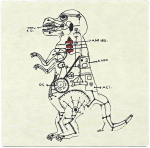
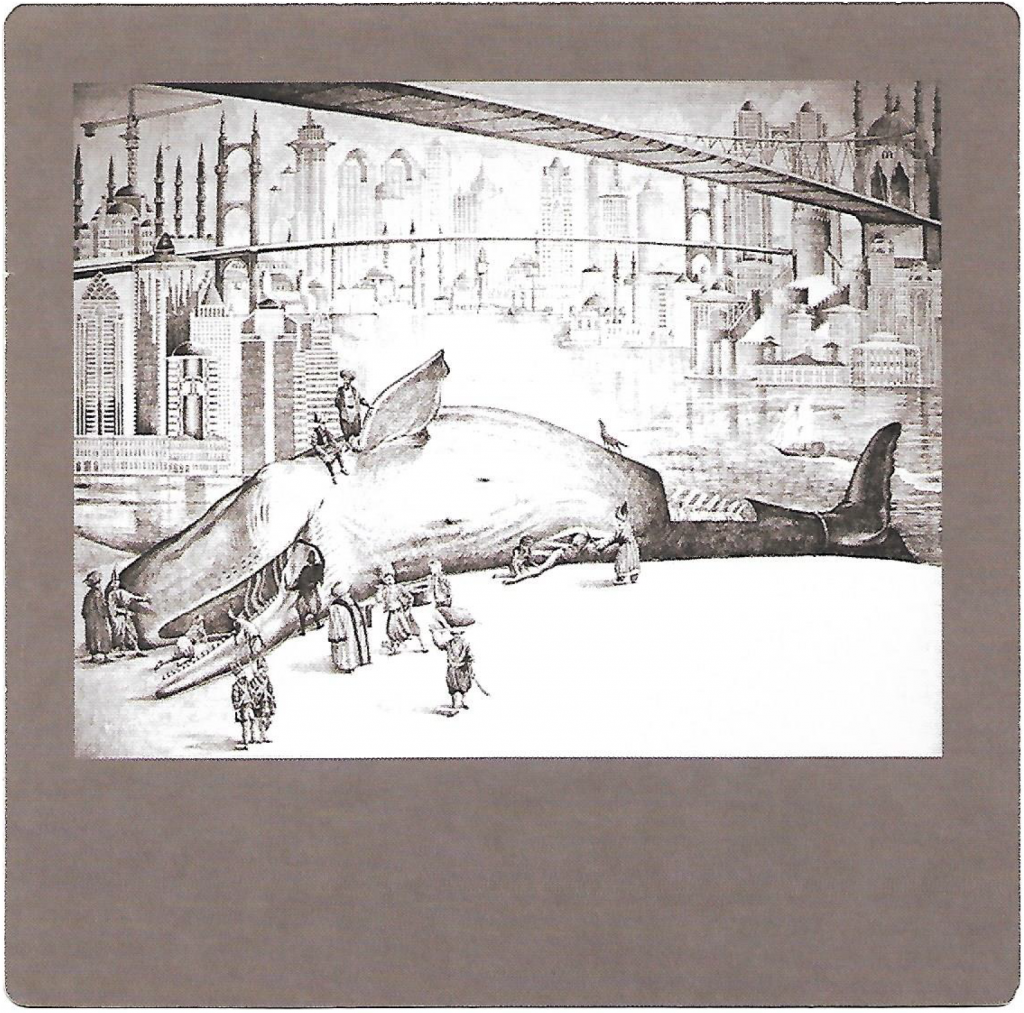
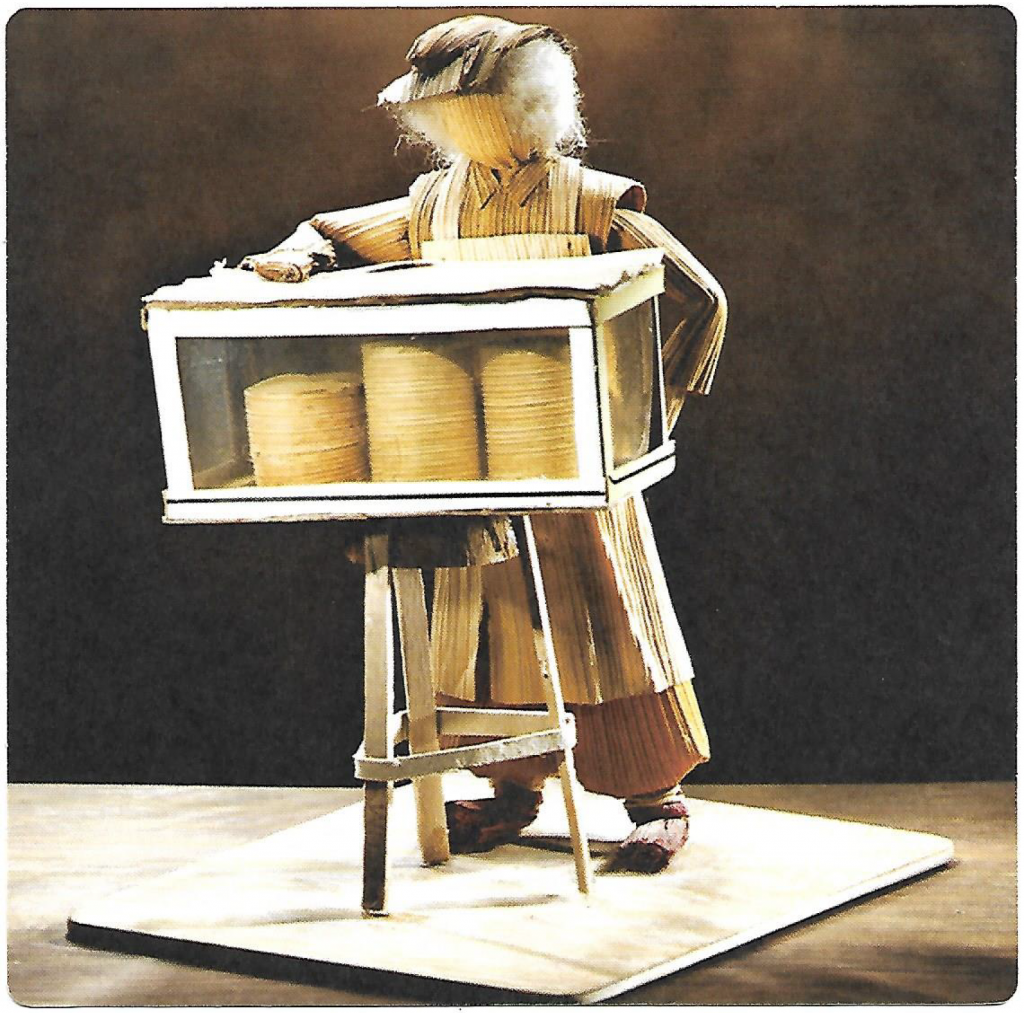
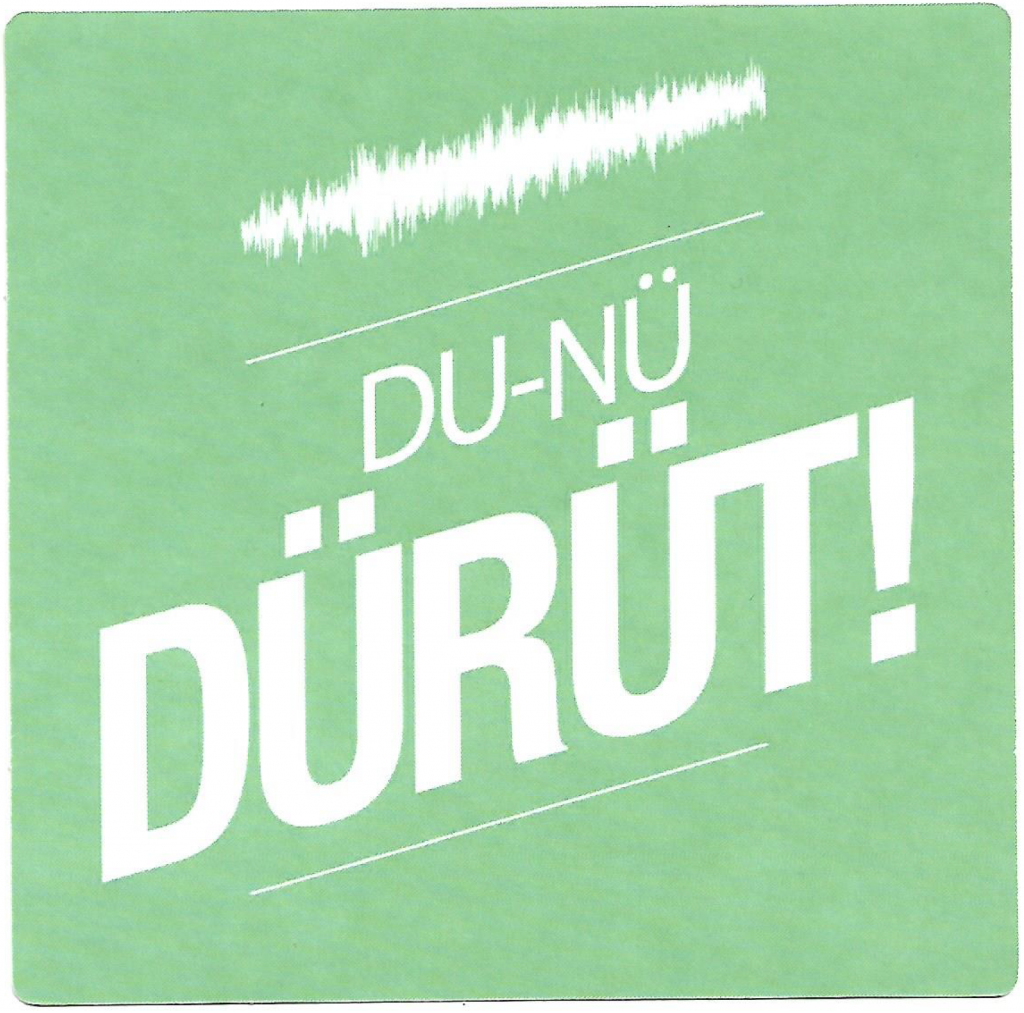
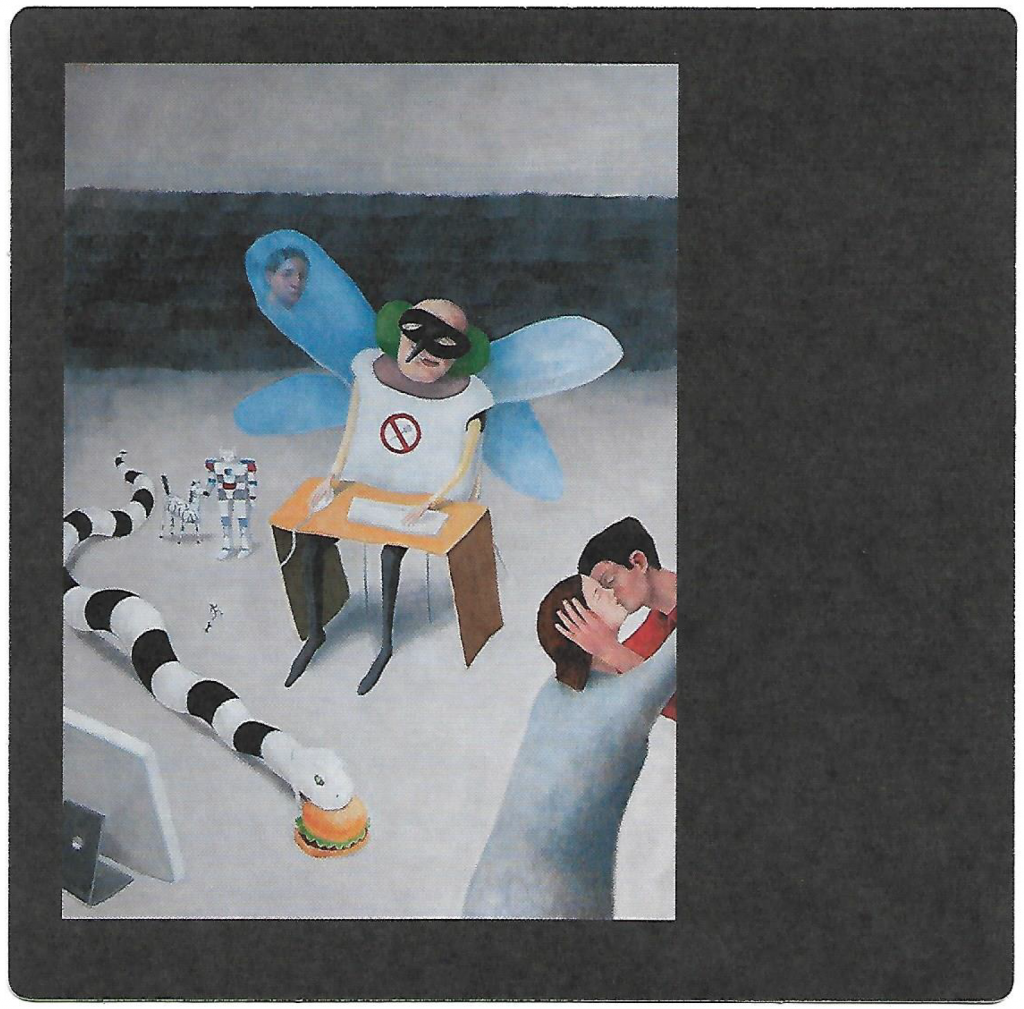
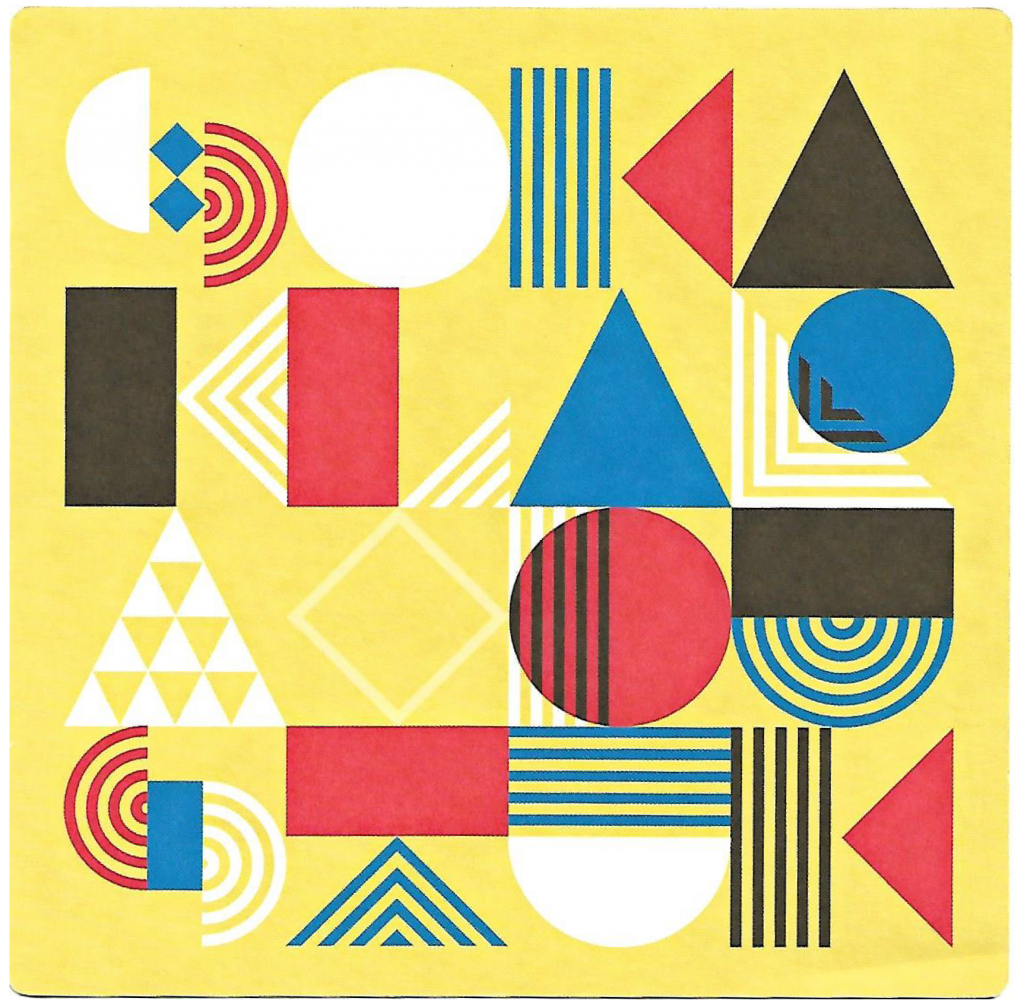
Some final thoughts focus on the box and contents: it is curious that the package and instructions contained therein offer less of the typically necessary information that what can be found on the website. For example, the sample package provided for us for testing does not indicate the target audience, age appropriateness, or typical length of play. Similarly, the rules and instructions, while already modest in complexity, remain somewhat inadequately explained by the enclosed manual. Necessary decisions to set up the game are not explicitly outlined in the manual and while some are implicitly obvious when reading others become obvious only when it is clear that the decision should have been made at the start, such as whether players should discuss and agree to a single common community problem before distributing cards.
All in all, there is a lot of value to be found inside HEY! Imaginable Guidelines Istanbul for teachers and maybe workshop trainers. As per Alexis, “the purpose is to engender a generation of amateur city designers to co-create the next generation of the city,” and HEY! Imaginable Guidelines Istanbul undoubtedly contributes toward that. In addition to the appealing collection of local artwork, the cards collectively are a veritable encyclopedia of urban design concepts. It’s easy to see students working with the cards on innovative group projects in class when they have more time to digest and discuss their information.
As a tool, HEY! Imaginable Guidelines Istanbul succeeds. As a game or as entertaining recreation, the verdict here is that it does not succeed. It does not really incorporate much in the way of game mechanics and its experience is not structured in a clear and purposeful way. Yet with more playtesting, design iteration, and attention to game design considerations, this reviewer can see a fun and enlightening experience sprouting from what it is today.
All photos courtesy of the author.









